Crew 306 GreenHab Report 30Dec2024
GreenHab Officer: Adriana Sanchez
Environmental control (fan & heater): Heater and fan on automatic at 94 and off at 82
Average temperatures (last 24h): 82.2
Maximum temperature (last 24h): 94.8
Minimum temperature (last 24h): 69.6
Hours of supplemental light: 1700 – 2200
Daily water usage for crops: 7 gallons
Daily water usage for research and/or other purposes: None
Water in Blue Tank (200-gallon capacity): 146.74 gallons
Time(s) of watering for crops: 9:15am, 4:40pm
Changes to crops: None
Narrative: Today was a very productive day in the GreenHab. I swept and got 6 pots ready for sunflower sprout transplants. One of the peas didn’t make it, I am going to wait for the other peas’ sprouts to get stronger before transplanting another one. I noticed that two tomato plants were missing tomato cages so I put tomato cages on them. There were 3 ready cucumbers so I harvested those and some cilantro for tonights dinner. Yesterday we harvested dill for dinner.
Harvest: 10g of Dill, 301g of Cucumber. 10g of Cilantro
Support/supplies needed: None
Journalist Report – December 29th
Stepping Stones
“A hero is one who knows how to hang on for one minute longer.” – Norwegian proverb
It is no secret that colonizing Mars is hard, but despite that, the idea of a Martian settlement has been discussed for a little while now. Mars One was perhaps the first organization to seriously propose a permanent human colony in the Red Planet. From its announcement in 2012 to its bankruptcy in early 2019, it is estimated to have received tens of millions of dollars. But maybe even more impressive is the number of people that applied for a one-way ticket in a journey that would last several months: 165,000 candidates. What, then, draws so many hopeful dreamers towards this collective vision?
For us from Crew Montes, Mars is a more than a dream. It is a testament of the best of our abilities, and Sol 7 was an illustration of why that is the case. Today, Mr. Fix It, Genie and I set out on an EVA to the same spot that others from the crew explored yesterday: Eos Chasm. This 4h30 EVA tested our mental and physical capabilities to their fullest, where we conducted five flight tests with the drone, sampled plenty of geodes and analyzed the subsurface soil for magnetic activity. Such an abundant and stunning region convinced us that we were in the right place, but we had already been warned by our crewmates that Mars wouldn’t be kind in this journey.
As we hiked further in the Chasm looking for more precious data, the path got progressively more appealing, making us not want to turn back until we got to the very end. Unlike yesterday’s EVA, the three of us could see the sight of magnificent pyramid-like structures on the horizon, and much like a mirage, for an entire hour we were hypnotized by the idea of reaching them. Meanwhile, the sun on our faces, the weight on our back, and the poor radio comms on our chest were all slowly draining our energy. The way back would not be easy, but Montes has no quitters.
After reaching the pyramids, we got an unexpected gift: an active flowing river would welcome us offering an unexpected break to the desertic dryness that surrounded us for hours. Our stop there would be short, though. After collecting our samples, we would have a mere 1h30 to get back to the hab. A time window that could be used for an entire Disney movie suddenly fell into our laps like a humongous challenge. No time for breaks anymore.
The arduous experience of hiking back was something that we all from Crew Montes shared. More specifically, one question seemed to have independently haunted each and every one of us: Why do it? Why keep going? After each step, we all asked ourselves the question of why we even bother with this laborious task, and why becoming an astronaut would appeal to anyone in the first place – let alone dozens of thousands of people.
One could argue that the many perks of becoming an astronaut – exploring the unknown, experiencing otherworldly moments like the overview effect, seeing what no one else saw before, or even being the first person to kick a soccer ball in a different planet – would be enough reasons to make it all worthwhile. These expectations, though, can quickly fall short in an environment where nothing works your way. The process is always a lot slower than it seems when you don’t have the equipment, internet, dexterity, human support, food, and many other catalysts to your success. Add that to the fact that messing up once might not have an escape route, and you might well be left with no motivation in a tough situation. There must be another reason to keep going.
I think the answer is actually hidden in plain sight. In other words, the experience IS the motivation. All it takes to beat the hardest, most demanding challenges a person can ever undertake is to take one more step. A step after another, little by little – but no stopping. One cannot stop moving forward. On Mars, refusing to stop can not only be the difference between life and death, but is also a representation that you are rising to the occasion, and preparing to what is coming next. In my own personal view, that is the secret recipe to becoming the Martian Ubermensch – the ultimate superhuman concept idealized by the philosopher Friedrich Nietzsche in the 19th century. If such an idea truly exists, taking the next step is the only way to achieve our wildest dreams.
We made it back just in time to the comfort of our hab – or, more precisely, with a 2-minute delay. Next time, we need to be better prepared so those minutes are not a concern. Lucky for us, this entire experience is already the preparation we needed. If one thing should be remembered from today, is to stand up and walk. Keep moving forward. You’ve got two good legs, so use them. In the words of Paul Carus, "No one saves us but ourselves. No one can and no one may. We ourselves must walk the path."
Hermit out.
Sol Summary – December 29th
Crew 306 Sol Summary Report 29-12-2024
Sol: 07
Summary Title: Sunflower
Author’s name: Jesus Meza
Mission Status: Active. All systems are nominal.
Sol Activity Summary:
The morning started at 07:00 with crepes for breakfast. The crew skipped morning meditation and stretching in favor of using the time to prep for EVA 08, a long trek towards the end of EOS Chasma. Keegan led the EVA team, with Rod and Elizabeth tagging along for DRONE flights and ambient magnetic data. At the HAB, Ryan ran coms for the EVA team and administered VR cognitive test to the rest of the HAB crew. Adriana fed her mushrooms and set up a humidifier in the grow tent to encourage healthy growth. Jesus used the hematite samples collected from Hab Ridge on EVA 05, to create our first Martian solar cell. The device was partially successful as it produced 0.5 V, but only briefly. These results have yet to be re-re-produced and verified. The EVA team performed five DRONE flights at three different sites within the chasma before heading towards the mouth where it meets the river. The team collected a soil sample here to analyze the iron content. The team made it back to the HAB two minutes behind schedule at 14:32. For lunch, Adriana prepared Jambalaya and mashed potatoes. The crew then spent the afternoon recovering from EVA’s and finishing up VR studies. For dinner we are having tuna sandwiches. The highlight of the day is a beautiful sunflower Adriana picked from the greenhab.
Look Ahead Plan:
Weather permitting, Elizabeth will lead Adriana and Jesus back to Eos Chasma to take EMF data of a spot deeper in the chasma. A secondary objective is to rescue a phone that was left behind somewhere near the second half of the chasma. Jesus will continue to look for hematite samples in the riverbed.
Anomalies in work: None.
Weather: Skys were clear with morning temperatures near 29 degrees F. The day warmed significantly with a high of 53 degrees F.
Crew Physical Status: Crew is happy and well.
EVA:
Keegan, Rod, and Elizabeth traveled to Eos Chamsa to take Li-DAR scans of the riverbed and EMF data near the entrance at the start of the chasma. The team performed a total of five DRONE flights at three different sites within the chasma, before tracking down to explore the end of the chasma where it meets the river. A soil sample was collected here for iron extraction at the HAB. The team made it back safe and sound two minutes behind schedule at 14:32.
Reports to be filed:
Sol Summary, Journalist Report, Greenhab Report, Operations Report, Crew Photos, EVA Report, and EVA request.
Support Requested: The crew has seen some evidence of a rodent in the HAB. No food has been chewed, but there are a few droppings underneath the cabinets, and up in the loft. It’s uncertain if these are new, or old. We will keep an eye out.
Crew Photos – December 29th
Journalist Report – January 1st
From Analysis to Catalysis
““Divide each difficulty into as many parts as is feasible and necessary to resolve it.” – René Descartes
We all have experienced moments in our lives where a problem makes us feel trapped, confused, or lost altogether. In fact, more likely than not, this might have happened to you today, yesterday, or the day before, and the feeling of discontentment is commensurate to the difficulty of the issue at hand. The most straightforward path to circumvent the situation is illustrated by an acronym present both in aviation, safety and mindfulness literature: STOP. In aviation and safety, STOP stands for Stop, Think, Observe, Plan, while the mindfulness technique indicates, very similarly, Stop, Take a breath, Observe, and Proceed. One word, however, is a suitable representation for these steps in both cases: analysis.
The word itself comes from the Latin ana- ‘up’ + luein ‘loosen’, literally meaning "loosen up" (or, in today’s generation slang, "take a chill pill"). The analytical process, much valued in the world of STEM (not to be confused with STOP!), is associated with breaking down and deeply understanding the constituent elements of the subject at hand. This usually requires the student or the scientist to take a step back, give themselves a moment’s worth of peace, watch the problem from an unattached, bird’s eye perspective, and finally come up with a game plan for a solution. Conversely, the catalysis takes place in the final implementation, which regularly is found to be a smoother and less stressful counterpart to the analysis stage. This is a process that can take up to months or even years, but Mars is not fond of waiting patiently. We need to move fast.
In Sol 10, Crew Montes reassessed our strategies with respect to multiple of our research projects. First, the DRONE team (Spy, Mr. Fix It and I) went out on an EVA to Barranca Butte to collect more data and samples for the electromagnetic frequency detector, the iron-rich energy generation project, and, of course, the DRONE. Even though we faced more technical challenges with the software for the DRONE, we were able to collect plenty of data for the other two experiments.
Once back to the hab, we started by fixing the remote hotspot connection to the DRONE, which is now running as smoothly as the finest rock on Mars. Moreover, having two electrical and computer engineers in the team felt like a gift from the heavens as Spy and Mr. Fix It assisted me with analyzing how the GPS and IMU sensors could be better integrated with the on-board Raspberry Pi computer. Instead of writing the script from scratch without internet connection – which at times felt like a blindfolded astronaut in the middle of a sandstorm -, the two of them patiently instructed me about the beauty of tech datasheets, which we are now using to reconfigure the code. With this, we hope to get the necessary data for all sensors to successfully create the mappings of the terrain accordingly later on.
In the meantime, Messiah worked on improving the methodology behind gathering iron-rich samples for crafting solar panels. As he worked on the samples, however, the process of analysis kicked in: Messiah realized that his approach was successful in generating an amazing 0.5 V of electrical voltage, but the sensitivity to light was lower than expected. This suggested, however, an interesting pivot in the research: instead of crafting a solar-panel like structure, Messiah’s idea is now to use the Martian soil as a source of energy for a chemical battery, which is yet another promising avenue for improving in-situ operations on Mars. And hopefully, with this power we could also increase the temperature downstairs up a notch – it’s starting to get chilly in the bathroom.
Finally, Murph kept working on her mycoponics research, discovering unexpected pitfalls and planning accordingly. She found that, exposed to low gravity and the environmental conditions at the hab, water sticks to the mycelial tube, and this stagnant liquid is a breeding ground for bacteria that slows down mushroom growth. This means that the mushroom chambers need to be under pressure to mitigate contamination and allow the liquid to fall more smoothly. With this discovery, she quickly devised a strategy to use a valve that will allow for the easy removal of the tubes from air inlets. This new chamber design will be conducted back at Purdue, but the last few sols will be valuable for testing out ideas and troubleshooting on-site. Don’t worry though, Murph – these test subjects are not going to be cooked after we’re done.
Overall, our experiences today demonstrate not only an essential step in the scientific process, but also a fundamental part of problem-solving. Developing new solutions for complex problems more often than not involves reiterating on the most basic level, requiring us to re-examine what we either took for granted or used as a baseline for all subsequent steps of our project. Maybe even more important is the representation of how this analytical process can be valuable in our own lives, to solve everyday problems that frequently mess up our mood and distance us from feeling like a "chill guy".
Next time you find yourself troubled by an impossible situation, taking a step back and looking for the threads you ignored can be the solution you needed all along. In the words of Carl Jung, that which we need the most will be found where we least want to look.
Hermit out.
Crew Photos – January 1st
Operations Report – January 1st
Crew 306 Operations Report 01-01-2025
SOL: 10
Name of person filing report: Keegan Chavez
Non-nominal systems: Overflow sensor
Notes on non-nominal systems: The overflow sensor in the bathroom went off when toilet fill sensor had just hit “Full”, the battery has been removed from the overflow alarm at the moment as it still goes off even after the toilet tank has been emptied
ROVERS
Spirit rover used: No
Hours: (before EVA):
Beginning charge: (Before EVA):
Ending charge: (On return from EVA, before recharging):
Currently Charging: Yes
Opportunity rover used: Yes
Hours: (before EVA): 200.1
Beginning charge: (Before EVA): 100
Ending charge: (On return from EVA, before recharging): 44
Currently Charging: Yes
Curiosity rover used: No
Hours: (before EVA):
Beginning charge: (Before EVA):
Ending charge: (On return from EVA, before recharging):
Currently Charging: Yes
Perseverance rover used: Yes
Hours: (before EVA): 299.3
Beginning charge: (Before EVA): 100
Ending charge: (On return from EVA, before recharging): 53
Currently Charging: Yes
General notes on rovers: none
Summary of Hab operations: Operations were nominal
Water Use (please use both methods to estimate water usage)
Time of measurements: 12/31/2024 1700 – 1/1/2025 1700
1) Per formula: 26.14 gal
2) Smart Home Dashboard: 23.54 gal
Water (static tank, remaining gallons): 236.32 gal (per formula)
Static tank pipe heater (on or off): On
Static tank heater (on or off): On
Toilet tank emptied (no or yes): yes
Summary of internet: nominal internet usage
Summary of suits and radios: Suits 1, 2, 6 were used for EVA today, all radios are charged and fully operational
Summary of GreenHab operations: GreenHab Officer: watered plants and the floor to increase humidity, extra water was given to tomatoes, harvest basil, parsley and cucumber
WATER USE: 8.5 gal
Heater (On or Off): On, automatic
Supplemental light (hours of operation): 1700 – 2200
Harvest (name, weight in grams): basil: 16g, parsley: 4g, cucumber: 186g
Summary of Science Dome operations: GreenHab Officer: refilled feeding syringes, moved feeding jars to Hab to clean, used silicone to seal humidity chambers back to jar, Commander: used lab oven 1 at 125C for 2 hours to dry samples from Eos Chasma, used 2 pots from GreenHab, made 5 new solar cells from processes hematite, cells read 0.6V for 3-4 mins
Dual split (Heat or AC, On or Off): On, automatic
Summary of RAM operations: none
Summary of any observatory issues: No issues
Summary of health and safety issues: No issues
Questions, concerns and requests to Mission Support: Empty trash from RAM airlock
EVA Report – January 1st
Crew 306 EVA Report 01-01-2025
EVA # 11
Author: Ryan Villarreal
Purpose of EVA: The first objective of this EVA was to test Crew Journalist Rodrigo Schmitt’s DRONE project for GPS and Li-DAR data collection capability. The second objective was to collect EMF meter readings from the region for Crew Geologist Elizabeth Howard’s research.
Start time: 10:02
End time: 12:55
Narrative: The EVA Crew stepped out of the airlock at 10:02 and proceeded to drive Perseverance and Opportunity South along Cow Dung Road until reaching the intersection of Trail 1101 and White Rock Canyon. The crew dismounted the rovers and took a short walk to the bottom of White Rock Canyon to begin testing the DRONE system. The DRONE was unable to collect data due to an issue connecting wirelessly via SSH to the data collection system. The crew spent 30 minutes troubleshooting before determining it would need to be investigated back at the HAB where the onboard computer could be directly accessed. The crew then continued the mission of EMF readings by walking out of the canyon and North along Cow Dung Road, placing the EMF reader at the start of trail 1101. The crew activated the reader and buried it, marking the location for later retrieval. As the EMF reader needs to be active over a period of time, the crew continued to hike West on trail 1101 to scan for potential iron-containing rocks along the trail for Crew Commander Jesus Meza’s research. The crew stopped at the base of Barrainca Butte before turning around and taking the same trail back to the EMF reader. The crew recovered the EMF reader and returned to the parked rovers and drove back to MDRS, arriving at 12:55. From this EVA, potential drone locations were marked for EVA #12, and approximately 1.5 hours of EMF readings were recorded. The crew also gathered 4 samples of potentially iron-containing rocks for analysis by Crew Commander Jesus Meza. The communication issues for the DRONE system were investigated after the EVA and were successfully resolved for EVA #12.
Destination: White Rock Canyon at (520250E, 4247500N), and Barrainca Butte at (519000E, 4247400N)
Coordinates (use UTM WGS 84): Rovers were parked at (520216E, 4247499N), and the crew hiked to White Rock Canyon (520297E, 4247567N), before then hiking to Barrainca Butte (519050E, 4247313N).
Participants: Crew Engineer Keegan Chavez, Crew Journalist Rodrigo Schmitt, and Health and Safety Officer Ryan Villarreal
Road(s) and routes per MDRS Map: Cow Dung Road taken South to White Rock Canyon. Rovers were parked on the road at (520216E, 4247499N) and the crew proceeded on foot Northeast into the White Rock Canyon. The crew then proceeded Northwest to Trail 1101, which was taken to Barrainca Butte.
Mode of travel: Rovers along Cow Dung Road from the MDRS campus until disembarking at (520216E, 4247499N) and proceeding on foot.
Sol Summary – January 1st
Crew 306 Sol Summary Report 01-01-2025
Sol: 10
Summary Title: New year, same old crew 306.
Author’s name: Jesus Meza
Mission Status: Active. All systems are nominal.
Sol Activity Summary:
Last night, mission support was kind enough to provide special coms for the crew to watch the “Boot Drop” in Prescott Arizona to ring in the Mountain Time new year. We huddled around a laptop eating brownies as we watched the “time delayed” feed of the celebrations on earth. By the time we got everything cleaned up it was 01:30. Naturally we had a late start to the day on Sol 10… at 07:30. Jesus made speggs (spam and eggs) and potatoes for breakfast. At 9:15 the crew started preparations for EVA 11. Keegan led Rod and Ryan down to White Rock Canyon, and Barrianca Butte to perform Li-DAR scans of the two sites and take ambient magnetic measurements for Elizabeth. Meanwhile at the HAB, Adriana, Elizabeth, and Jesus took turns running coms while performing general tasks such as cleaning and organizing the HAB. The EVA team returned to the HAB at 12:55. Elizabeth made rice and ground beef for the crew to eat during lunch. At 15:30 the crew split up to do research and general tasks. Rod, Ryan, and Keegan continue to work on improving the DRONE data collection software. Adriana continues to monitor her mushrooms, and Jesus continues to work on fabricating solar cells using the hematite samples he collected on EVA. In the late afternoon Keegan and Ryan began another game of Terraforming Mars, a game which half of the crew seems to be consumed by. For dinner we are having a vegetable stir-fry to make up for having brownies yesterday.
Look Ahead Plan:
Sol 11 will look forward to the end of our rotation. Rod, Elizabeth, and Keegan will return to the site of EVA 11 to perform more Li-DAR scans. Ryan will run coms and provide tech support for the DRONE. Jesus will perform final experiments with his solar cells, and Adriana will begin to wrap up her mushroom study. The rest of the day will be spent on VR cognitive test and wrapping up our research in anticipation of the end of our rotation on Sol 12.
Anomalies in work: None.
Weather: Today was a cold day with a high temperature of 41 degrees F. Skies were clear and winds were low with an average speed of 1 mph, and gusts up to 6 mph.
Crew Physical Status: The crew is physically well, but sad that our rotation is ending soon.
EVA:
EVA 11 saw Keegan, Rod, and Ryan travel to White Rock Canyon and Barrainca Butte. The team’s goal was to take ambient magnetic measurements for Elizabeth’s project and perform Li-DAR scans of the area. After several attempts, the team was unable to connect to DRONE’s onboard computer to initiate data collection. This time it was a problem with the SSH portal, rather than the code problems observed before EVA 10. Because of this problem, the team was unable to perform the Li-DAR scans. The team did however take the required magnetic data, and identified several spots ideal for scanning. The team looks to return to the site on Sol 11, for what is likely to be our last EVA.
Reports to be filed:
Sol Summary, Journalist Report, Greenhab Report, Operations Report, Crew Photos, EVA Report, and EVA request.
Support Requested: None.
GreenHab Report – January 1st
Crew 306 GreenHab Report 1Jan2025
GreenHab Officer: Adriana Sanchez
Environmental control (fan & heater): Heater and fan on automatic at 94 and off at 82
Average temperatures (last 24h): 79.9
Maximum temperature (last 24h): 89.8
Minimum temperature (last 24h): 70.0
Hours of supplemental light: 1700 – 2200
Daily water usage for crops: 8.5 gallons
Daily water usage for research and/or other purposes: None
Water in Blue Tank (200-gallon capacity): 134.5 gallons
Time(s) of watering for crops: 10:30 am, 4:30pm
Changes to crops: None
Narrative: Some of the tomatoes looked a little wilted so I made sure to give them extra water today. I went back and checked on them a few times and they plumped up by the EOD. The sunflower and pea transplants are both looking healthy and happy. The carrots and tomatoes are getting pretty sizable, they will be ready for the next crew.
Harvest: 186 g Cucumbers, 16g of Basil, 4g of Parsley
Support/supplies needed: None
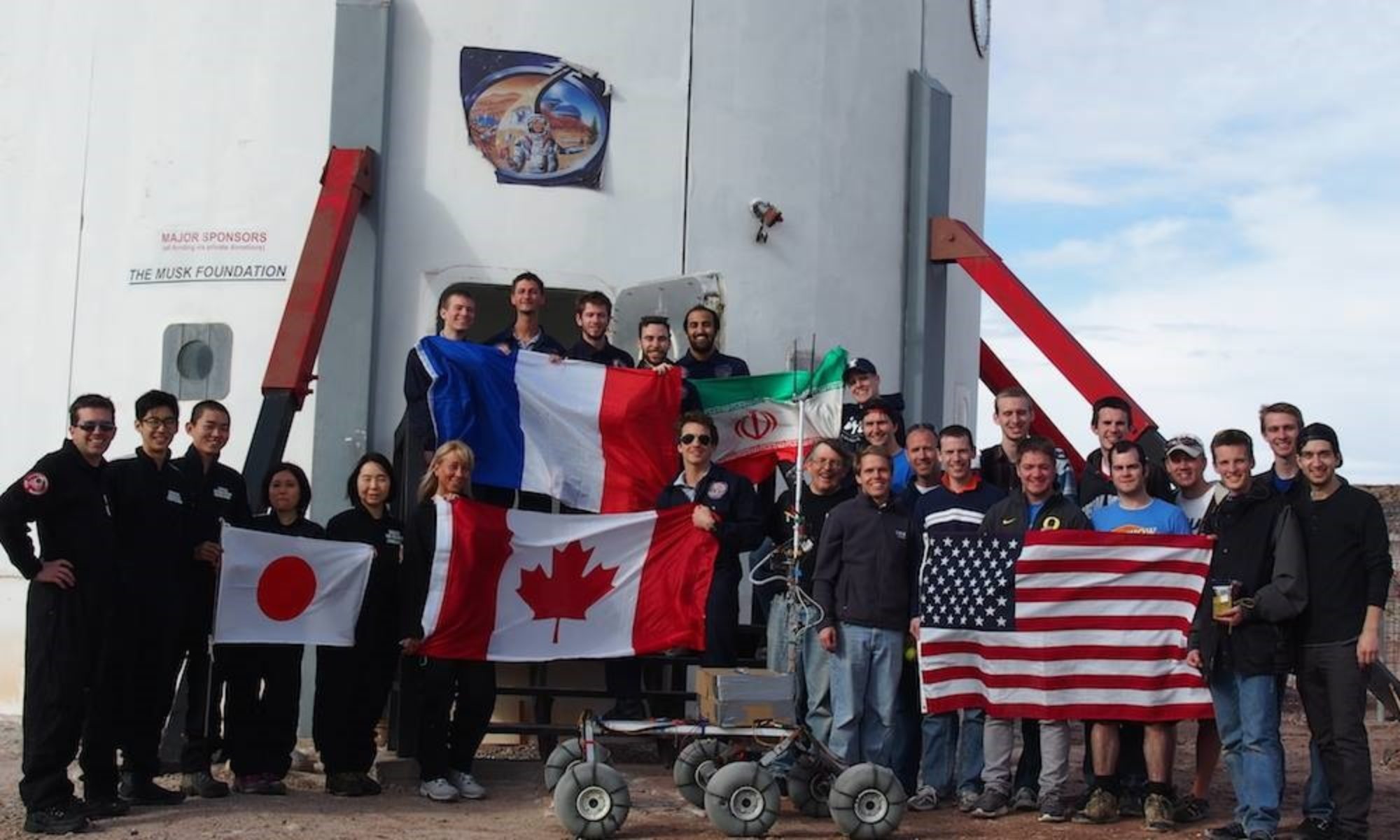

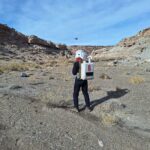
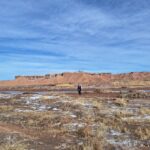
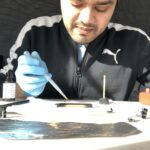
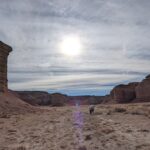
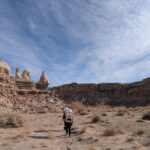
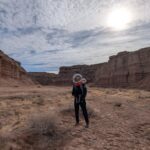
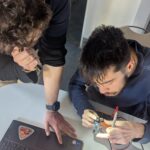
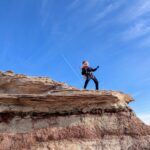
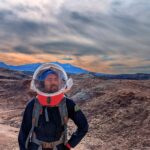
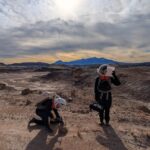
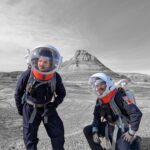
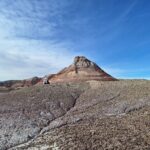
You must be logged in to post a comment.